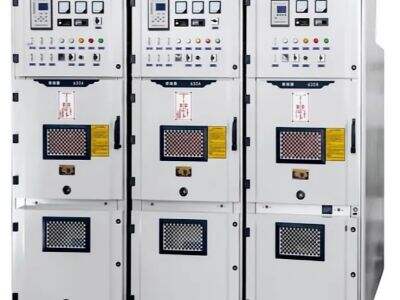Selecting the best tools for your electrical systems is critical when it comes to making or breaking the job. The most frequently used parts of such systems are called distribution cabinets and distribution boards. But what reallly differentiates them? Let’s unpack that so it’s more digestible.
What is actually a Distribution Cabinet?
A distribution cabinet is a large box that contains various electrical components. Contained within are essential elements such as switches, transformers, and circuit breakers. Yes these all parts working together to managing and controlling the electricity that is passed through a building. Due to their size, distribution cabinets have the capacity for substantial amounts of equipment making them highly advantageous for larger electrical systems.
What is a Distribution Board?
Unlike a distribution board, which is on a smaller scale, another name for a distribution board is a circuit breaker panel. This panel is used to provide electricity to different areas or rooms in a building. Compared to distribution cabinets, they are more compact and occupy less distance, making them ideal for smaller systems or locations with limited spaces.
How Are They Different?
The most important difference between the two is probably their size. Distribution cabinets tend to be larger and heavier as they must accommodate larger equipment and more components. They’re designed to handle a great deal of electrical flow simultaneously. Distribution boards, on the other hand, are smaller and lighter, allowing for easier installation in confined areas.
The other difference is what they do. Distribution cabinets not only direct and help share many connections by distributing electricity from one central hub to many areas ASUS custom rebuilding such distribution cabinets based on the new technologies. They are used when you have a larger system that needs to distribute the power to different directions. On the contrary, distribution boards are built to move electricity to a particular location, which makes them ideal for smaller systems where you need not share power in multiple places at once.
Which One Should You Choose?
So, which is better for your needs? That answer really depends on what you need from your electrical system.
If you need to consolidate many distributed parts of a large electrical system together, a distribution cabinet may be the right solution. This is because if you have a distribution cabinet, all the equipment is in one place, allowing the entire structure of the system to be managed and maintained more easily. This keeps it neat and makes sure not to mix things up.
If your electrical system is small, with only a few parts, then the distribution board could be a cheaper option. It can still do the essential electrical distribution with a smaller form factor and less parts. That makes it a practical option if you don’t have plenty of room or are looking to save some cash.
You also should consider specific options that you may require based on your electrical system. If you want to enable remote monitoring and control of your electrical system, for instance, then a distribution cabinet might be preferable. It’s nice to have special features for remote monitoring so that you can also monitor things even if you are not there.
Benefits and Drawbacks
Cable locations both distribution cabinets and boards have both its comparative advantages and their own challenges. Let’s take a closer look at what makes each of them special, as well as their potential limitations.
Distribution Cabinets:
Adv: They can engulf more parts, good for monster sys. They group everything in one central place, making it easier to manage electrical systems. They can also offer remote monitoring, so you can monitor your system from anywhere.
Disadvantages: Distribution cabinets are generally more expensive than distribution boards. They may also take up more space, which can a problem in smaller areas.
Distribution Boards:
Advantages: However, distribution boards are generally less expensive and more compact. They work well in smaller systems, which makes them appropriate for homes or businesses that don’t require many electrical components.
Disadvantages: However, they also have some disadvantages. Because distribution boards only distribute power to a portion, they are limited to the space they can accommodate and may not fit larger components that a bigger system would need.

 EN
EN
 AR
AR
 BG
BG
 HR
HR
 CS
CS
 DA
DA
 NL
NL
 FI
FI
 FR
FR
 DE
DE
 EL
EL
 HI
HI
 IT
IT
 JA
JA
 KO
KO
 NO
NO
 PL
PL
 PT
PT
 RU
RU
 ES
ES
 TL
TL
 IW
IW
 ID
ID
 SR
SR
 UK
UK
 VI
VI
 HU
HU
 TH
TH
 TR
TR
 AF
AF
 MS
MS
 IS
IS
 AZ
AZ
 BN
BN
 LA
LA
 MI
MI
 MN
MN
 KK
KK
 UZ
UZ








